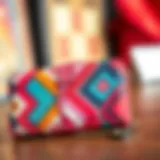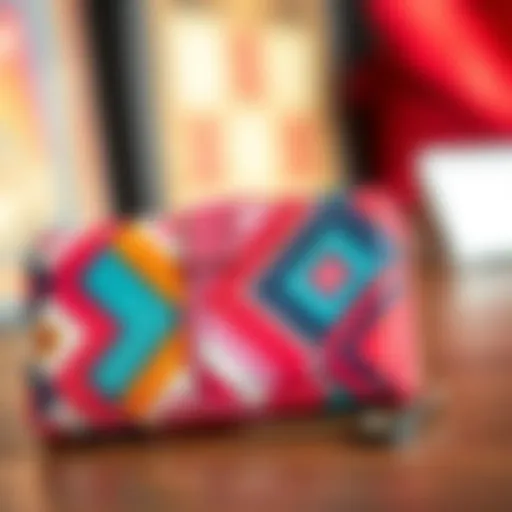The Allure of Fluffy Comfort in Fashion
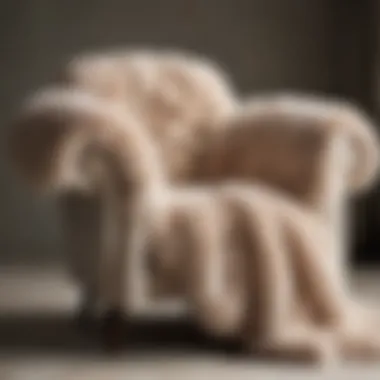

Intro
In today’s bustling world, where style is often seen as synonymous with discomfort, the embrace of fluffy comfort in fashion is a breath of fresh air. Think about it: the soft caress of cashmere on your skin or the delightfully plush texture of a faux fur jacket can not only elevate your outfit but also offer unparalleled warmth and ease. As more fashionistas and industry insiders recognize the delightful merger of texture with aesthetics, it's clear that fluffy materials are more than just seasonal fads—they're transformative elements that redefine what we consider fashionable and functional.
This exploration takes a closer look at how soft, fluffy textures find their way into our everyday wardrobe choices, marrying comfort with elegance. Whether you're lounging at home or attending a high-profile event, the right fluffy piece can keep you cozy while ensuring you don't compromise on style.
Fashion Trends
Emerging Styles
While fashion is ever-evolving, certain trends have shown a notable affinity for fluffy materials. Designers are weaving together various fluffy fabrics to create pieces that exemplify both luxury and comfort. From oversized cardigans made of brushed wool to statement puffer jackets that emanate warmth, the runways have showcased an impressive range of options.
To incorporate these pieces into your wardrobe, consider starting with:
- Textured Coats: Look for long, fluffy coats that add dimension to your outfit.
- Statement Sweaters: A chunky knit pullover can be paired with everything from jeans to skirts.
- Soft Accessories: Scarves and hats in plush materials can easily elevate even the simplest ensemble.
Seasonal Must-Haves
The seasons bring about shifts in styling and material choices, but the allure of fluffy comfort remains a constant. Here are some must-have clothing items for each season:
- Spring: Lightweight, fluffy cardigans for layering.
- Summer: Breezy, plush tanks or tops that still make a statement.
- Autumn: Fluffy sweaters that radiate warmth in both color and feeling.
- Winter: Thick, dramatic coats that serve as both outerwear and a fashion statement.
Timeless Fashion
Classic Pieces
Some fluffy items have stood the test of time, becoming staples in the fashion world. Simple yet opulent, materials like lambswool and down continue to be favored for their durability as well as their softness. These classic pieces not only enhance your wardrobe but also reflect an enduring appeal of comfort blended with style. Consider investing in:
- Cashmere Sweaters: Perfect for dressing up or down.
- Fluffy Slippers: Offering comfort at home and beyond.
- Faux Fur Coats: An ethical take on a timeless trend.
Styling Tips
Mixing and matching classic styles with contemporary pieces requires a thoughtful approach. Here are some tips to achieve that unique look:
- Layer Wisely: Pair a fluffy coat with structured trousers to balance softness with structure.
- Accessorize Thoughtfully: Use minimalist jewelry to accentuate a lush, textured outfit without overwhelming it.
- Play with Proportions: Consider wider silhouettes on the bottom with a snug, fluffy top to create a balanced silhouette.
"Fashion is not about what you wear, but how you wear it. Fluffy comfort allows you to not just wear but to express yourself with ease."
By embracing the luxurious qualities of soft textures and fluffy materials, you can elevate your everyday attire while staying true to the functional needs of modern life. As we delve deeper into the allure of fluffy comfort, it becomes evident that it appeals not only to our sense of style but also to our intrinsic desire for comfort.
Understanding Fluff in Fashion
In the realm of clothing, one thing that stands out sharply is fluff, yet its depth often goes unnoticed. Fluffy materials evoke a sense of comfort that transcends mere aesthetics. These textiles do not just satisfy the need for clothing but also fulfill emotional yearnings. Whether it's a soft wool sweater in winter or a plush teddy coat, fluffy elements play a crucial role in modern fashion. In an era where fast-paced lifestyles often take a toll, these comforting fabrics provide a welcome refuge.
The Origins of Fluffy Textures
Tracing back through the ages, fluffy textures have their roots grounded in necessity. Early humans relied on animal hides and wool for warmth, unknowingly laying the groundwork for what would become a fashion staple. The cozy allure of fur and wool might have started as survival, but it soon morphed into a symbol of luxury and status.
Interestingly, regions with colder climates sparked the development of fluffy designs that would hold cultural significance. From the intricate patterns of traditional Nordic sweaters to the elegant lines of Mongolian cashmere, one can see how necessity intertwined with craft, creating textures that people now seek for their comfort while still being fashionable.
Cultural Significance of Soft Fabrics
Soft fabrics represent more than just a tactile experience; they hold layers of meaning across different cultures. For many societies, certain fluffy materials symbolize wealth, warmth, and familial bonds. In some cultures, gifting a knitted blanket signifies love and care, often passed down from generation to generation.
Moreover, the choice of fabric can reflect personal identity. For instance, the use of alpaca wool in Peruvian clothing showcases not just comfort but an expression of community and heritage. Likewise, heavy fleece garments in urban settings illustrate practicality married with street style, showing how fluffy elements adapt to different environments.
"Fluffy materials not only comfort us physically but also create connections emotionally and culturally, weaving us into the very fabric of our communities."
Evolution of Fluffiness in Clothing
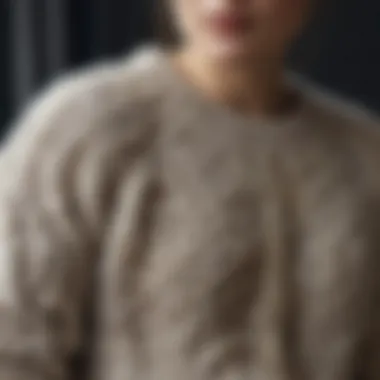

The journey of fluffiness in clothing has seen remarkable changes. Initially embraced for warmth, the 20th century brought a revolution in how fluff is perceived. Designers like Coco Chanel and later, brands such as Burberry, elevated fluff beyond utilitarian to high fashion. Today, you’ll find fluffiness transcending various styles, from haute couture to everyday casual wear, making its way into the wardrobes of fashion influencers and stylists.
This evolution indicates that fluff is not a fleeting trend but a fundamental aspect of clothing that can adapt, merge, and redefine fashion norms. The blend of function and style through fluffy textures provides the ultimate comfort, highlighting the contemporary shift towards valuing ease without sacrificing elegance.
Materials That Embrace Comfort
When it comes to fashion, the materials we choose are the backbone of the comfort we experience. This section delves into the significance of various fabrics that prioritize softness, warmth, and overall feel-good factor. The right materials can turn an ordinary outfit into an embracing cocoon, making one feel refreshed and stylish at the same time.
Natural vs Synthetic Materials
In the grand tapestry of fashion, there’s a constant battle between natural and synthetic materials. Natural fibers like cotton, wool, and silk have been staples for centuries. They breathe well and often feel better against the skin. Wool, for example, has moisture-wicking properties, which keeps you warm without making you sweat.
On the flip side, synthetic materials like polyester and nylon have made their mark due to their durability and ease of maintenance. They can mimic the soft feel of natural fibers, offering affordable options without breaking the bank. However, the downside is sometimes they lack breathability, which can lead to sticky situations. So, choosing between the two boils down to personal preference and considering factors like skin sensitivities or the environment you’ll be in.
Popular Fluffy Fabrics of Today
Cashmere
Cashmere is like the holy grail of luxurious fabrics. It’s known for its unmatched softness, a rarity comes from the cashmere goat’s undercoat. This fiber feels lighter than air yet provides incredible warmth, making it a favored choice for sweaters and scarves. Its sumptuous texture not only adds elegance but also offers comfort in spades. The downside? It usually comes with a hefty price tag, making it a splurge for many. However, its longevity and timeless appeal often make it worth the investment.
Fleece
Fleece has risen from humble beginnings to become a household staple. Lighter than wool and just as warm, it’s got an impressive ability to wick moisture away, making it perfect for outdoor activities. Fleece jackets are not just practical but cozy, wrapping wearers in a plush embrace during chilly nights. It does have its drawbacks, though: fleece can pill over time and isn’t the best option for high-fashion settings. Yet, for comfort on a budget, it reigns supreme.
Teddy Fabric
Have you ever wished to wrap yourself in a teddy bear? Now you can, thanks to teddy fabric. This fabric is extremely soft, bringing a playful vibe to outerwear and cardigans. Its fluffy texture is inviting and perfect for those lazy days at home. Notably, teddy fabric holds warmth well, making it a go-to choice for cozy jackets. In terms of disadvantages, its bulkiness can make styling tricky if not done right. It’s easy to cross the line from chic to frumpy, so careful pairing is essential for a balanced look.
Innovations in Textile Technology
In recent years, textile technology has introduced exciting advancements that blur the lines between traditional materials and modern requirements. Techniques like weaving, knitting, and blending have led to the creation of fabrics that are not only soft and fluffy but also more sustainable and functional. Brands are experimenting with recycled materials that provide comfort without compromising the Earth’s resources. This shift is not just a trend, but a necessary step towards a more eco-friendly fashion landscape. Innovations continue to emerge, promising to change how we wear comfort and style in our daily lives, thus ensuring that fluffy materials stay relevant for years to come.
Fashion Trends Featuring Fluff
Fashion is a constantly evolving realm, and in recent years, the emphasis on comfort has driven many trends. Fluffy textures have emerged as a cornerstone in creating stylish yet cozy garments. This section will delve into key trends focusing on the importance and application of fluffiness in modern outfits.
Fluffy Coats and Outerwear
In the chill of winter, nothing beats a comfy coat that feels like a warm hug. Fluffy coats have become a must-have item in any fashion-savvy individual’s closet. The prevalence of options, ranging from oversized teddy coats to chic faux fur jackets, adds a layer of versatility. Not only do these coats keep you warm, but they also enhance any outfit with their plush aesthetic.
Imagine stepping out in a soft, fluffy coat made from sherpa material over sleek jeans and ankle boots. This effortless look conveys a sense of elegance while prioritizing comfort—an equilibrium that many strive for today. Moreover, the tactile experience of wearing these fluffy pieces creates a unique, sensory attribute that’s becoming increasingly desired alongside visual appeal.
"Fashion is not just what you wear, but how it makes you feel."
Sweaters and Knitwear Styles
When it comes to sweaters, the rise of fluffy knitwear cannot be overlooked. This style offers a delightful blend of warmth and style, inviting wearers to revel in their snug embrace. Fluffy knits present themselves in various forms, from loose turtlenecks to cropped designs that pair elegantly with high-waisted trousers. The mere act of cuddling up in a cozy sweater provides a sense of security, which resonates deeply with contemporary sensibilities around mental well-being and self-care.
The colors and textures available today are diverse—imagine deep burgundy plush pullovers or light pastel shades that whisper comfort. Adding a soft knit to your collection not only enhances winter wardrobes but also serves as a stylish solution for layered looks as the seasons transition. Layering fluffy knits with tailored blazers or long-sleeve tops can impart a sense of chic prowess without sacrificing the delight of softness.
Fluffy Footwear Trends
Fluffy footwear is perhaps one of the most playful interpretations of the comfort trend. Brands are latching on to this whimsy in offering sandals and slip-ons crafted with plush materials that almost feel like walking on clouds. These trendy designs successfully merge comfort with style, establishing a casual look that doesn’t lose its sophistication.
Fluffy mules or slippers are perfect for lounging at home while making a statement on the streets. On days when you want to project a relaxed vibe, consider pairing fluffy footwear with relaxed-fit jeans and a simple graphic tee. The contrast between casual and fashionable encapsulates a growing trend to prioritize comfort without compromising one's style. Footwear shouldn’t simply be functional but also reflect one's personality, and fluffy options do just that.
In summation, while comfort reigns supreme in today’s fashion landscape, the use of fluffy textures reflects a sophisticated understanding that softness can coexist with style. As these trends gain traction, it is evident that fluffy comfort is not just an aesthetic choice; it's a lifestyle statement that resonates with the modern fashion-conscious individual.
Comfort as a Fashion Statement
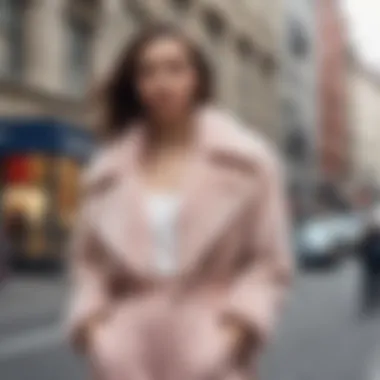

In the modern era, comfort has evolved beyond being a mere afterthought in fashion; it has become a significant part of how we define style. Gone are the days when one had to sacrifice ease for elegance. Instead, the notion of a well-rounded wardrobe now embraces fluffy textures and soft materials as essential elements that resonate with sophistication and practicality. This shift is not only about coziness; it's about making a statement that reflects a lifestyle where comfort and style can coexist harmoniously.
Personal comfort is the new black, blending effortlessly with bold designs and high fashion. When celebrities and influencers showcase outfits that prioritize ease of wear while still being eye-catching, they set trends that reverberate through the industry. The realm of fluffy comfort extends to all kinds of designs, giving a nod to a well-tailored pair of fluffed boots or a gracefully designed fuzzy jacket. This interplay has paved the way for a more inclusive view of what it means to dress fashionably today.
Factors that have contributed to this phenomenon include:
- Changing Lifestyles: Many people now work from home, prefer casual outings, or focus on wellness, demanding attire that supports a relaxed, active life.
- Cultural Shifts: Society is gradually loosening rigid dress codes, welcoming a mix of chic and casual styles across various settings.
- Emotional Wellbeing: Individuals are seeking clothing that makes them feel good. There is a psychological aspect to wearing something soft and fluffy that enhances mood and self-confidence.
"Fashion is about dressing according to what’s fashionable. Style is about being yourself." — Oscar de la Renta
The Rise of Athleisure with Fluffy Elements
The athleisure trend has surged in popularity, bridging the gap between gym-related wear and street style. This movement reflects a growing preference for clothing that provides ease while also being fashionable. Fluffy components in athleisure, such as plush hoodies or soft joggers, have allowed style-savvy individuals to remain comfortable without compromising on aesthetics.
Popular fluffy pieces in athleisure include:
- Soft fleece joggers with stylish cuts
- Plush cropped hoodies
- Cozy oversized sweaters paired with leggings
This trend has not only changed how we perceive workout gear, but also how we incorporate these pieces into our daily routines.
Balancing Elegance and Comfort
The relationship between elegance and comfort may seem contradictory, but it's a fine balance that modern designers have mastered. The idea that one cannot feel comfortable while looking refined has been challenged immensely. For instance, consider the image of a soft cashmere sweater paired with tailored trousers; it maintains an air of sophistication while allowing freedom of movement.
Wearing fluffy textures can elevate an outfit in various contexts:
- Work Events: Opt for a tailored blazer with a fluffy lining.
- Social Gatherings: A chic, fluffy scarf can add warmth while enhancing style.
- Formal Occasions: Blending luxurious fluffy fabrics like silk or faux fur creates an exquisite appearance with unmatchable comfort.
Fluffy Textures in High Fashion
High fashion has always had a penchant for showcasing bold innovations, and the emergence of fluffy textures has made its mark on runways globally. Designers have adopted these materials not just for their aesthetic appeal but also for their tactile qualities. The soft contours of fabrics such as fleece or faux fur demand attention, inviting audiences into a world that embraces both allure and lavish comfort.
Some iconic examples in high fashion include:
- Chanel: Often utilizes luxurious fluffy tweeds that offer both visual and textural elegance.
- Balenciaga: Infamous for their oversized silhouettes featuring fluffy textures to create a statement piece.
- Fendi: Their plush outerwear has redefined high-fashion comfort, encouraging consumers to invest in quality that prioritizes both function and style.
This blend of comfort and luxury changes the narrative around clothing, allowing individuals to express their personalities through both fashion choices and a dedication to comfort.
Practical Tips for Incorporating Fluff into Your Wardrobe
When it comes to fashion, integrating fluffy textures into your closet isn’t just a whim; it’s a statement about comfort and style all at once. Fluff in clothing delivers a cozy sentiment while allowing eclectic self-expression. The importance of knowing how to incorporate these appealing materials cannot be overstated. Not only do they enhance the overall aesthetic of your outfits, but they also add layers of comfort that are hard to resist. Let’s dive deeper into practical ways to embrace fluff in your day-to-day wear.
Accessorizing with Fluffy Pieces
Adding fluffy elements to your accessories can elevate even the simplest attire. Think oversized fluffy scarves or a fuzzy handbag to complement a sleek outfit. Not everyone feels comfortable draping fluff from head to toe, so starting small is often a smart move.
- Fluffy Scarves: A chunky, oversized scarf can be both a functional and a stylish addition. Opt for materials like fleece or teddy fabric for a warm embrace during chilly days.
- Fuzzy Hats and Beanies: A soft hat not only provides warmth but also adds a touch of playfulness to your look, making it more approachable.
- Footwear: Fluffy slippers or soft-soled shoes can bridge the gap between home comfort and street style. Choose footwear with exaggerated fluffy detailing for a bold statement.
"Accessorizing with fluffy pieces can turn an average outfit into a style powerhouse without veering into overwhelming territory."
Layering Techniques for Fluffy Fabrics
Layering can be a game-changer when it comes to flaunting fluff. Understanding how to mix and match while maintaining an overall balance is crucial.
- Base Layer: Start with a fitted top. Consider something snug like a cotton turtleneck, as it creates a clean slate.
- Middle Layer: Here’s where the fluffy magic happens. A chunky knit sweater or a fluffy cardigan can add both warmth and visual interest. Ensure it doesn’t overwhelm your silhouette.
- Outer Layer: Whether it’s a structured coat or a soft shawl, ensure it contrasts nicely with the fluffy layer underneath. This creates depth in your outfit.
Pro tip: When layering, stick to a maximum of three varying textures to keep the ensemble chic rather than chaotic.
Styling for Different Occasions


Adapting fluffy elements to fit various settings is essential for mastering this trend.
- Casual Outings: Pair a fluffy hoodie with high-waisted jeans for an effortless yet stylish appearance. Add sneakers for comfy flair.
- Work Environments: Opt for a sophisticated fluffy blazer. This can provide a relaxed yet polished look suitable for an office setting. Pair it with tailored trousers or a pencil skirt.
- Formal Events: For more upscale occasions, look for elegant fluffy wraps or shawls. Streaming a subtle shimmer will keep the pastoral feeling while acknowledging the formality of the event.
Each occasion presents its unique demands regarding what elements to embrace or shy away from, nudging the wearer to explore a range of outfit possibilities.
With these guidelines, anyone can confidently integrate fluffy textures and fabrics into their wardrobe, seamlessly transitioning between comfort and style across varying landscapes of daily life.
Sustainability in Fluffy Fashion
The fashion industry is at a crossroads, facing scrutiny over its environmental impacts and ethical considerations. The movement towards sustainability is not just a passing trend; it's a fundamental shift in the way fashion operates. Sustainability in fluffy fashion highlights the pressing need to embrace eco-friendly practices without sacrificing the comfort and style that draw many to fluffy materials.
Understanding sustainability within this context means recognizing how the fibers we choose affect the planet. Natural materials like organic cotton, wool, or bamboo often have a lower carbon footprint compared to synthetic fibers. Moreover, the treatment processes for these materials can be designed to minimize waste and use of harmful chemicals. There's a growing consciousness among both consumers and designers about the lifecycle of the products we wear.
"There's no such thing as ethical fashion - only fashion that's less harmful."
This sentiment resonates deeply as we consider how fluffiness can coexist with environmental responsibility. Fluffy clothing should not only feel luxurious but be produced in ways that honor both workers and the ecosystem.
Ethical Sourcing of Fluffy Materials
The journey toward sustainability begins with ethical sourcing. This means ensuring that materials are obtained from suppliers who prioritize environmental management and social responsibility. One key approach is transparency in the supply chain. Customers are increasingly looking for brands that disclose where and how their products are made. Natural fibers like cashmere or alpaca can be sourced in a manner that respects both animal welfare and local farmers.
Some companies work directly with communities, ensuring that they are fairly compensated for their labor and that the land is used sustainably. Although this often comes at a higher price point, many consumers are willing to invest in pieces that contribute positively to both society and the environment. Trust in transparency builds brand loyalty, allowing consumers to support practices that align with values of sustainability and ethical production.
The Future of Sustainable Comfortable Fashion
As we look to the future, it’s evident that the future of sustainable comfortable fashion hinges on innovation. Designers are blending technology with mindful practices to create new textiles that are both comfy and eco-friendly. Emerging materials like mushroom leather or recycled polyester demonstrate the potential for fluffy fabrics that do not compromise the environment.
Moreover, the concept of a circular economy is becoming increasingly significant. This system encourages brands to consider not just the making of clothing but its full lifecycle, encouraging repair, recycling, and responsible disposal. The idea is to keep materials in use as long as possible, reducing waste and minimizing the demand for new resources.
Furthermore, the rise of second-hand shopping and clothing rental services reinforces sustainability. By promoting reuse and sharing, consumers can enjoy fluffy comfort while contributing to a decrease in the fashion industry’s carbon footprint.
Brands Leading the Way
There are notable brands at the forefront of this movement, taking significant strides in sustainable fluffy fashion.
- Patagonia: Known for its commitment to the environment, Patagonia uses recycled materials and sustainable practices in their clothing lines, including fluffy fleece options.
- Reformation: This brand emphasizes eco-friendly materials and transparent production processes, pushing boundaries in both style and ethics.
- Everlane: With a focus on radical transparency, Everlane ensures its products are made ethically and often opts for natural materials that add that desired fluffiness.
These pioneers are not just making fashion; they’re reshaping the industry's approach to comfort with responsible manufacturing practices. Consumers are increasingly leaning towards brands that genuinely commit to sustainability, showing that luxurious comfort can indeed harmonize with ethical responsibility.
The End: The Impact of Fluffy Comfort on Contemporary Fashion
The conversation surrounding fashion has always danced between the dichotomy of comfort and style. The rise of fluffy comfort in contemporary clothing has begun to reshape our understanding of these two elements, bridging the gap between the necessity of comfort and the desirability of style. Nowadays, well-crafted, sumptuous fabrics are not merely a luxury; they symbolize a shift in consumer priorities that increasingly values the fusion of relaxation and refinement within fashion.
In modern society, where the pace of life often feels relentless, clothing must meet more than just aesthetic appeal. Key benefits of incorporating fluffy textures include
- Enhanced Wearability: Soft materials are appealing not only for their luxurious feel but also for their versatility in various settings. These textures lend themselves well to both casual outings and more sophisticated gatherings.
- Mood Elevation: Wearing comfortable fabrics can positively influence one’s mood. The tactile experience of fluffy items fosters a sense of warmth and relaxation, subtly enhancing confidence levels.
- Sustainable Choices: As designers push towards sustainability in fashion, many fluffy garments are crafted from eco-friendly or recycled materials, marrying luxury with conscious consumerism.
As we delve into reflections on comfort versus style, it becomes evident that the subjective nature of fashion permits a broad spectrum of personal expression.
Reflections on Comfort Versus Style
The battle between comfort and style is not new, but how they intertwine in today’s fashion landscape is fascinating. Fluffy fabrics invite us to reconsider preconceived notions regarding what we should wear. In years past, there was often a trade-off: wear something uncomfortable to maintain style or sacrifice looks for comfort. However, fluffy attire—be it a cozy cashmere sweater or plush fleece joggers—challenges this longstanding paradigm.
Consider the modern professional's wardrobe. Many individuals now prefer attire that allows for easy movement while looking sharp, migrating away from rigid styles. This evolution indicates not just a trend but a deeper cultural shift toward valuing personal comfort and well-being.
"The intersection of comfort and style in fashion isn’t just about aesthetics; it’s about creating a lifestyle that cherishes both the appearance we present to others and the feelings we cultivate within ourselves."
The Ongoing Journey of Fluffy Textures in Fashion
Fluffy textures have undergone a fascinating journey within the fashion domain. From historic loungewear to runway staples, the infusion of soft fabrics into high fashion is marked by a distinct evolution. Once deemed too casual for upscale apparel, fluffy materials are now celebrated for their compelling ability to add depth and dimension to any outfit.
Current designer collections showcase bold explorations of texture, combining different fluffy elements with varied fabrics to challenge traditional norms. Innovations are at play, where fashion houses like Balenciaga and Chanel have diligently pushed boundaries, merging the luxury of fluff with intricate cuts and cohesive silhouettes.
This journey also points towards an encouraging trend in democratizing fashion. As the allure of comfort extends its reach, fluff becomes more accessible across various price points, allowing consumers from diverse backgrounds to indulge in this sumptuous style.


